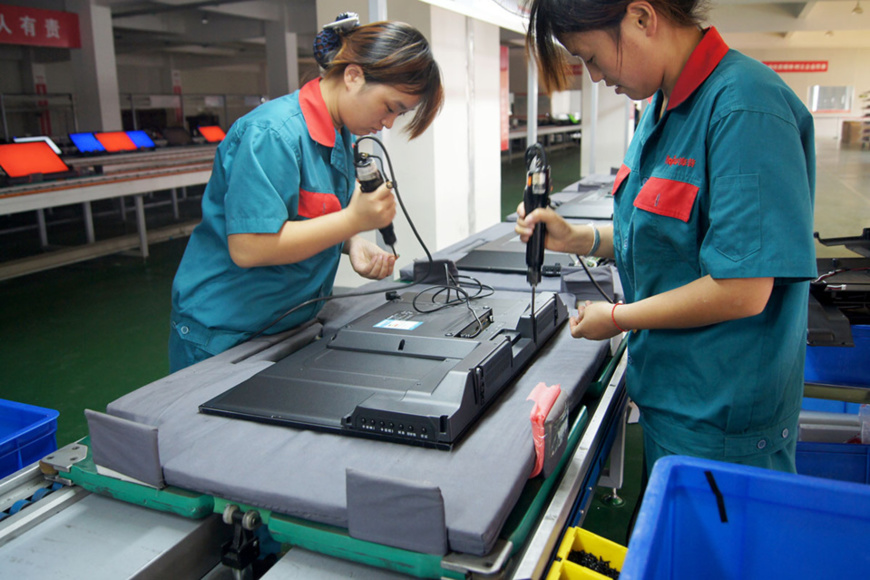By Wang Ke, Wu Qiuyu, Qi Zhiming from People’s Daily
China has earnestly and comprehensively fulfilled the promises it made when joining the World Trade Organization (WTO) by continuously opening its market wider to the outside world, stressed Gao Feng, the spokesperson of the country’s Ministry of Commerce.
Gao reiterated the stance in response to the doubts over China’s “lower-than-expected” market access, which is believed to be one of the reasons for the US to launch the Section 301 investigation against China.
Gao’s statement was echoed by many other scholars and experts. “Since China’s entrance to the WTO, the country has taken proactive measures to fulfill its commitment,” said Lian Ping, chief economist of the Bank of Communications, citing its efforts to open banking, securities, and insurance markets and historic achievements in the financial sector as evidence.
China has now become the world’s largest exporter and the second largest importer. It also remains the top investment destination among developing countries and a major source of outbound investment.
Data shows that China has lowered its overall tariff level from 15.3% at the time of its accession to 9.8% in accordance with WTO rules, delivering on its promises to all WTO members and over-fulfilling the organization’s requirements for developing countries.
“Taking the trade structure into consideration, China's trade-weighted average tariff rate is standing at 4.4%, on par with the rates of developed countries, such as 2.4% in the US, 3% in the EU and 4% in Australia,” said Gao.
China promised to open up 100 of the WTO's 160 sub-sectors when accessing the organization, and so far it has opened 120 of them, said Vice Minister Wang Shouwen.
“As a matter of fact, to fulfill the promises is just a part of China’s efforts to expand its openness,” said Li Guanghui, vice-president of the Chinese Academy of International Trade and Economic Cooperation, the think tank under the Ministry of Commerce.
By continuously improving investment and market environment, speeding up the pace of opening up and lowering the operational costs of markets, China has created a more stable, equal-footed, transparent and predictable business environment, he added.
Last year, China unveiled 20 measures to further open up the economy to foreign investment and set up another 7 pilot free trade zones (FTZ) including the one in northeast Liaoning province. Now the country has 11 pilot FTZs, forming an opening-up network encompassing the whole territory.
The country also announced to remove 27 restrictions on foreign investment in a newly issued negative list for its free-trade zones. In addition, the catalogue for the guidance of foreign investment industries released by the Ministry of Commerce also cut 30 special administrative measures restricting foreign investment, from 93 in the previous version.
The string of measures adopted by the US regarding trade policies on China is a result of typical protectionism, Cold-war mentality and zero-sum game, Gao stressed, adding that the US should not blame on China groundlessly.
Gao reiterated the stance in response to the doubts over China’s “lower-than-expected” market access, which is believed to be one of the reasons for the US to launch the Section 301 investigation against China.
Gao’s statement was echoed by many other scholars and experts. “Since China’s entrance to the WTO, the country has taken proactive measures to fulfill its commitment,” said Lian Ping, chief economist of the Bank of Communications, citing its efforts to open banking, securities, and insurance markets and historic achievements in the financial sector as evidence.
China has now become the world’s largest exporter and the second largest importer. It also remains the top investment destination among developing countries and a major source of outbound investment.
Data shows that China has lowered its overall tariff level from 15.3% at the time of its accession to 9.8% in accordance with WTO rules, delivering on its promises to all WTO members and over-fulfilling the organization’s requirements for developing countries.
“Taking the trade structure into consideration, China's trade-weighted average tariff rate is standing at 4.4%, on par with the rates of developed countries, such as 2.4% in the US, 3% in the EU and 4% in Australia,” said Gao.
China promised to open up 100 of the WTO's 160 sub-sectors when accessing the organization, and so far it has opened 120 of them, said Vice Minister Wang Shouwen.
“As a matter of fact, to fulfill the promises is just a part of China’s efforts to expand its openness,” said Li Guanghui, vice-president of the Chinese Academy of International Trade and Economic Cooperation, the think tank under the Ministry of Commerce.
By continuously improving investment and market environment, speeding up the pace of opening up and lowering the operational costs of markets, China has created a more stable, equal-footed, transparent and predictable business environment, he added.
Last year, China unveiled 20 measures to further open up the economy to foreign investment and set up another 7 pilot free trade zones (FTZ) including the one in northeast Liaoning province. Now the country has 11 pilot FTZs, forming an opening-up network encompassing the whole territory.
The country also announced to remove 27 restrictions on foreign investment in a newly issued negative list for its free-trade zones. In addition, the catalogue for the guidance of foreign investment industries released by the Ministry of Commerce also cut 30 special administrative measures restricting foreign investment, from 93 in the previous version.
The string of measures adopted by the US regarding trade policies on China is a result of typical protectionism, Cold-war mentality and zero-sum game, Gao stressed, adding that the US should not blame on China groundlessly.
 Menu
Menu
 China has been opening market since joining WTO: Official
China has been opening market since joining WTO: Official

















